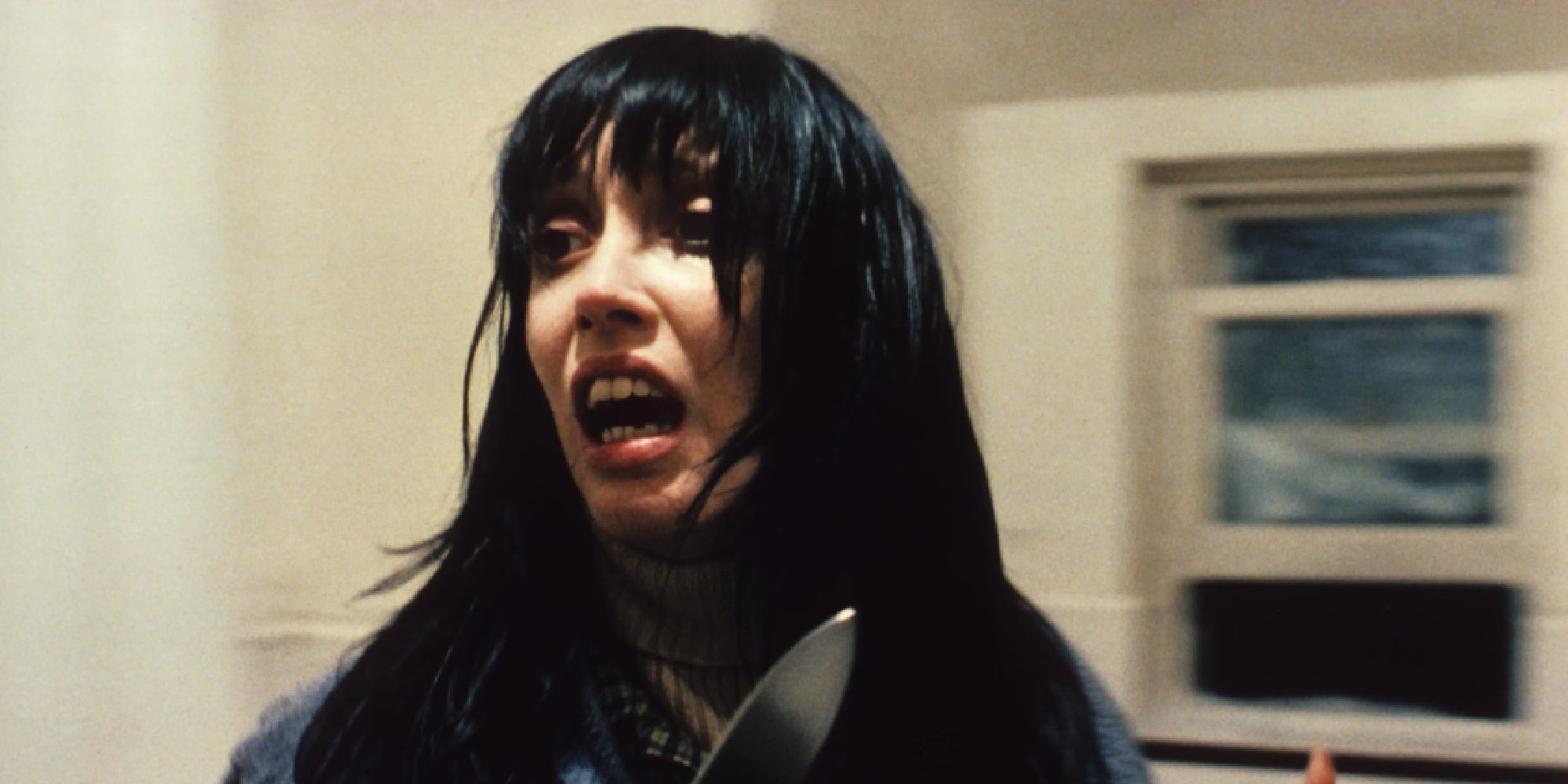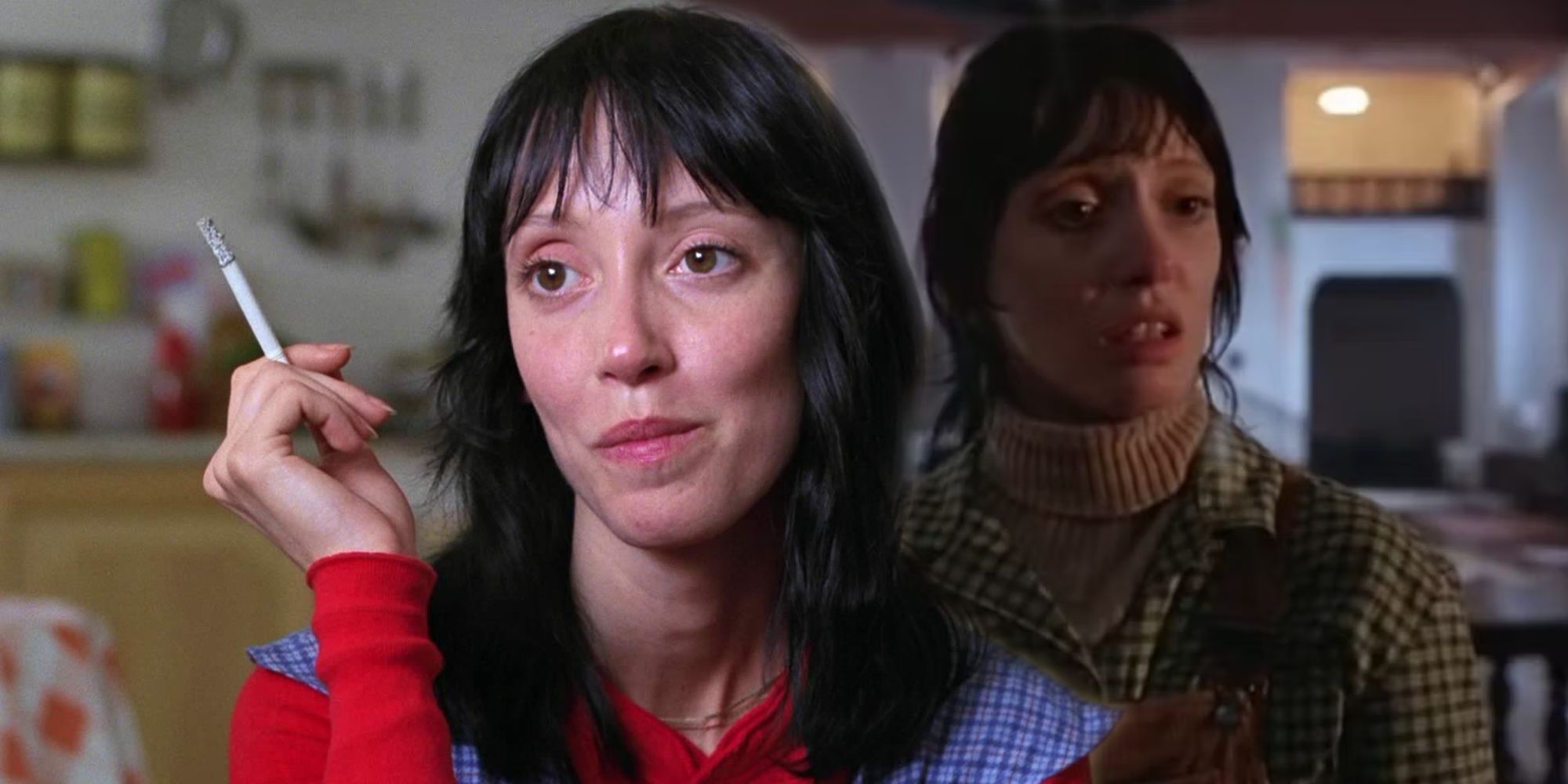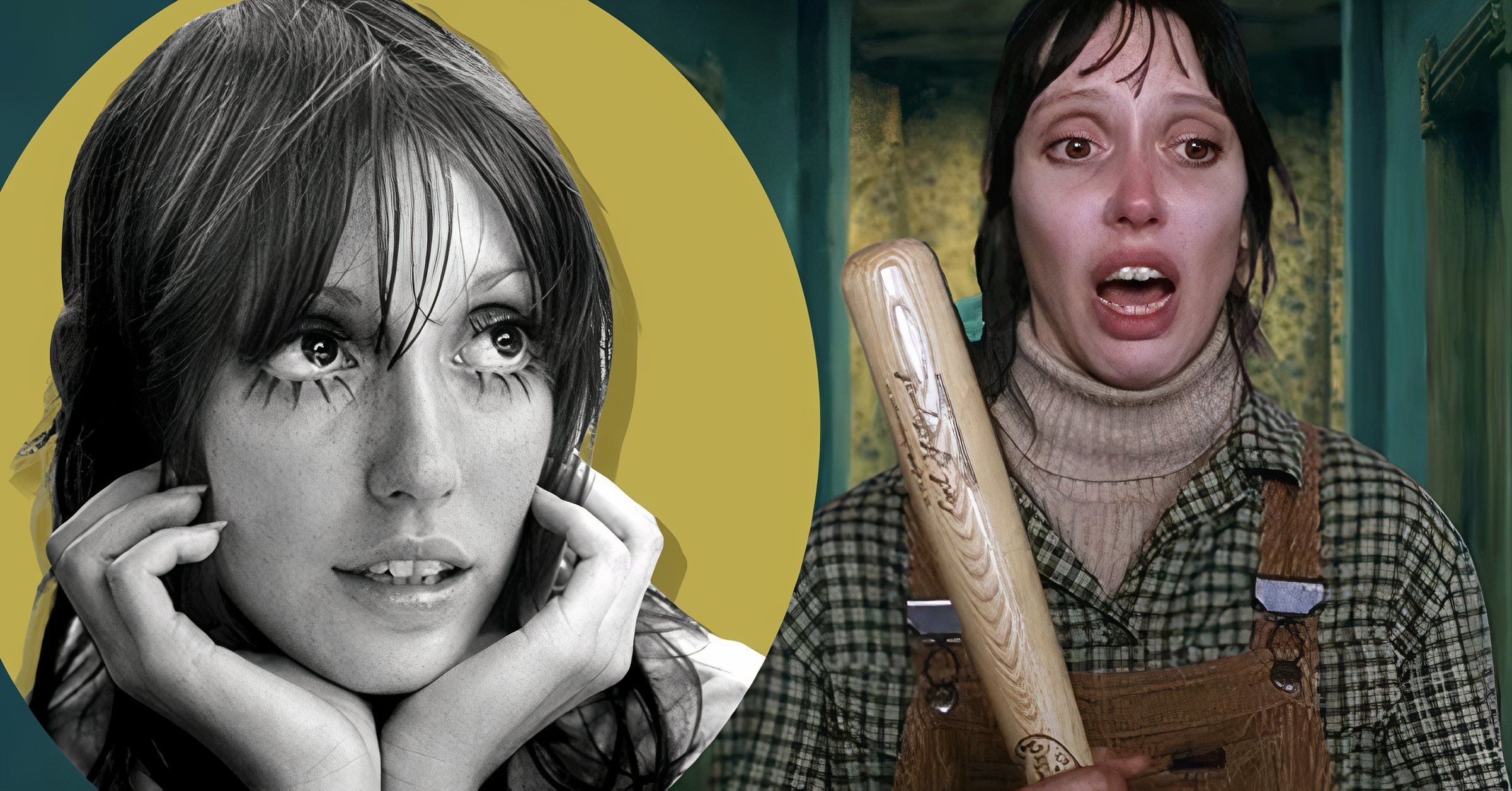How Much Money Did Shelley Duvall Make From The Shining? Unpacking A Hollywood Mystery
Have you ever wondered about the financial side of iconic film performances? It’s a fascinating question, especially when we think about actors who truly poured their heart and soul into a role. Shelley Duvall’s portrayal of Wendy Torrance in Stanley Kubrick’s The Shining is, in a way, one such performance that remains etched in our minds, a rather raw and unforgettable presence on screen. People often talk about the movie’s impact, the chilling atmosphere, and of course, her incredibly intense work.
Her role as Wendy, the increasingly terrified wife, is something quite special. The film itself, released in 1980, is a cornerstone of horror cinema, a true classic that continues to captivate audiences around the globe. Duvall’s unique screen presence and her very real reactions during the grueling production are well-documented, adding layers to the mystery surrounding her time on set.
While the artistic legacy of her performance is clear, a question that frequently comes up is about the practical side: how much money did Shelley Duvall actually make from her part in The Shining? Finding a precise figure for an actor's salary from a film made over four decades ago can be, you know, a bit of a challenge. Public records for such details are often quite private, making it tough to pinpoint exact numbers. Yet, we can explore the context of the time and the nature of the production to get a better sense of things.
Table of Contents
- Shelley Duvall: A Look at Her Life and Career
- Personal Details and Bio Data
- The Shining: A Demanding Production
- Understanding Actor Salaries in the 1970s
- The Elusive Figure: Shelley Duvall's Compensation
- The Impact of The Shining on Her Career
- Beyond The Shining: Her Later Work
- Frequently Asked Questions About Shelley Duvall and The Shining
- Wrapping Things Up: Her Lasting Legacy
Shelley Duvall: A Look at Her Life and Career
Shelley Duvall possessed a truly distinct quality that set her apart in Hollywood. Born in Houston, Texas, her journey into acting was not a conventional one, as a matter of fact. She was discovered by director Robert Altman, who was drawn to her very unique appearance and quirky personality. This led to her debut in his 1970 film, Brewster McCloud.
She quickly became a favorite of Altman's, appearing in several of his notable works, including McCabe & Mrs. Miller, Thieves Like Us, and the critically acclaimed Nashville. Her performances were often praised for their raw honesty and natural feel. Duvall brought a certain vulnerability and charm to her characters, which made her quite memorable. Before The Shining, she had already established herself as a serious actress with a growing reputation in the independent film scene, and stuff.
Personal Details and Bio Data
| Full Name | Shelley Alexis Duvall |
| Born | July 7, 1949 |
| Birthplace | Houston, Texas, U.S. |
| Occupation | Actress, producer, writer |
| Years Active | 1970–2002, 2023 |
| Notable Works | Brewster McCloud, Nashville, 3 Women, The Shining, Popeye, Faerie Tale Theatre |
The Shining: A Demanding Production
When we talk about The Shining, it’s impossible to ignore the intense, often difficult, circumstances of its creation. Stanley Kubrick, the film’s director, was known for his very particular and demanding style. He often required numerous takes for a single scene, pushing his actors to their limits in pursuit of his artistic vision. For Shelley Duvall, this experience was, you know, particularly grueling.
Accounts from the set describe a very stressful environment, especially for Duvall. Kubrick reportedly isolated her and subjected her to constant criticism, aiming to elicit genuine fear and distress for her character. This approach, while perhaps effective for the film’s chilling atmosphere, took a considerable personal toll on her. She often worked long hours, crying for much of the day, and experienced physical and emotional exhaustion. It’s a pretty well-known story that her hair started falling out in clumps due to the stress, and stuff.
The sheer duration of the shoot was also remarkable. Filming stretched for over a year, a far longer period than most Hollywood productions. This extended schedule meant that actors were committed for a very long time, affecting their ability to take on other projects and adding to the overall intensity of their work. The conditions she faced during this movie were, honestly, quite extreme, and that, too, plays into how we think about her compensation.
Understanding Actor Salaries in the 1970s
To get a sense of what Shelley Duvall might have earned, it’s helpful to look at the general landscape of Hollywood salaries in the late 1970s. The film industry was different then, you know, compared to today's massive blockbuster paychecks. While there were certainly highly paid stars, the figures weren't quite as astronomical as what we see for A-listers in the current era. A leading role in a major studio film could command a significant sum, but it varied quite a bit based on the actor's star power, previous box office success, and the film's budget.
For established leading actors, a salary in the hundreds of thousands of dollars was common, sometimes reaching into the low millions for the biggest names. For someone like Jack Nicholson, who was already a major star with an Academy Award to his name, his asking price would have been considerably higher. He reportedly earned around $1 million for The Shining, plus a share of the profits, which was a very substantial amount for the time, you know.
Now, when we consider "how much" money an actor makes, the word "much" itself points to a great quantity or degree, doesn't it? It suggests a substantial extent of financial reward for their work. For actors in the 1970s, earning "much" meant securing a significant amount, a sum that reflected their talent and the demands of the role. The compensation for a film like The Shining would have been considered a large amount, reflecting the film's budget and the expected returns. It indicates a substantial extent or level of something, generally implying a significant or notable difference or abundance compared to what was considered usual or ordinary for many jobs, that is.
Factors like an actor's previous box office performance, their negotiating agent, and the overall budget of the movie all played a part in determining "how much" they would ultimately receive. For a film with a director like Stanley Kubrick, known for his meticulous approach and often high production values, there was likely a substantial budget allocated for talent, including the leading roles. So, in some respects, the expectation was that the main actors would be paid quite well.
The Elusive Figure: Shelley Duvall's Compensation
Despite the widespread interest in The Shining and Shelley Duvall's performance, the exact figure of her salary for the film has, honestly, never been widely or publicly confirmed. This is pretty common for many actors, especially from that era, as their contracts are private matters. There isn't a definitive number that has been released by Warner Bros. or by Duvall herself.
However, we can make an educated guess based on industry standards of the time and her standing. While she was a recognized talent, especially within independent cinema and with Robert Altman, she wasn't yet the box office draw that Jack Nicholson was. It's highly probable that her salary would have been considerably less than his, as is typical for the supporting lead in a film starring a major, established male star. She was, in a way, still building her mainstream profile.
Given the demanding nature of the role, the extended filming schedule, and the sheer psychological toll it took on her, one might argue that her compensation, whatever it was, perhaps didn't fully reflect the "great intensity, extent, or degree" of effort and suffering she endured. The word "much" here could also refer to the "great quantity" of emotional labor she put into the role. It’s generally thought that a significant supporting role in a major studio film like this would have paid somewhere in the range of tens of thousands to a few hundred thousand dollars. So, it's very likely she earned a good sum, but probably not in the millions like her co-star, you know.
The true value of her work, arguably, goes beyond any specific paycheck. Her performance is integral to the film's lasting power, and that's something that, you know, really can't be measured in dollars and cents. The sheer amount of dedication she brought to the part, a truly substantial extent of commitment, made the film what it is. The question of "how much" she made is intriguing, but the impact of her work is perhaps even more significant.
The Impact of The Shining on Her Career
The Shining, for all its artistic merit, had a very complex impact on Shelley Duvall’s career and personal life. On one hand, it gave her a prominent role in one of the most talked-about and enduring horror films ever made. Her performance, though initially met with some mixed reviews, has since been re-evaluated and is now largely seen as a powerful and essential part of the movie’s success. Many critics and fans now recognize the immense difficulty of her role and the raw authenticity she brought to it, you know.
On the other hand, the grueling production left her emotionally scarred. She openly spoke about the psychological distress she experienced, which affected her willingness to continue acting in high-pressure environments. The sheer "degree" of the demands placed upon her during filming was, frankly, extreme. This experience, in some respects, seems to have contributed to her later withdrawal from the public eye and her eventual retirement from acting for a long period.
While the film brought her international recognition, it also came at a very high personal cost. It’s a classic example of how a truly iconic performance can be born out of incredibly challenging circumstances, and how that can affect an actor long after the cameras stop rolling. The amount of effort she expended, the very "great quantity" of emotional energy, was truly remarkable, and that's something to remember.
Beyond The Shining: Her Later Work
After The Shining, Shelley Duvall continued to work, though perhaps not at the same intense pace or in roles of such high profile. She reunited with Robert Altman for Popeye (1980), where she played Olive Oyl, a role that seemed almost tailor-made for her unique look and comedic timing. This was a rather different experience, a more lighthearted one after the darkness of the Overlook Hotel.
She also created and hosted the beloved children's television series Faerie Tale Theatre (1982-1987) and later Shelley Duvall's Tall Tales & Legends (1985-1987). These projects allowed her to explore her creative interests as a producer and writer, bringing classic stories to life for a new generation. They were, in a way, a very different kind of challenge, showcasing her versatility beyond dramatic acting.
Duvall continued to appear in films and television shows sporadically throughout the 1990s and early 2000s, including a role in Steven Soderbergh's The Underneath (1995). However, her public appearances became less frequent over time. Recently, she made a return to acting with the independent horror film The Forest Hills, released in 2023, which was, you know, a very welcome surprise for many fans.
Frequently Asked Questions About Shelley Duvall and The Shining
People often have a lot of questions about Shelley Duvall and her most famous role. Here are some common ones:
Was Shelley Duvall traumatized by The Shining?
Many reports and Shelley Duvall's own statements suggest that the filming of The Shining was indeed a very traumatizing experience for her. Stanley Kubrick's intense directing methods, the long hours, and the emotional demands of the role reportedly caused her significant stress and emotional distress. She spoke openly about the difficulties she faced on set, which, you know, really affected her for a long time.
Why did Stanley Kubrick treat Shelley Duvall that way?
Stanley Kubrick's stated intention was to push Shelley Duvall to a point of genuine emotional distress, believing it would result in a more authentic and powerful performance for Wendy Torrance. He reportedly wanted her to feel the isolation and fear that her character was experiencing. While his methods were highly controversial and caused her great suffering, they were, in a way, part of his very particular artistic process for this film.
What happened to Shelley Duvall after The Shining?
After The Shining, Shelley Duvall continued to act and also moved into producing children's television series like Faerie Tale Theatre. She gradually withdrew from the public eye in the early 2000s, living a quieter life. In 2023, she made a return to acting in an independent film, which was, you know, a pretty big moment for her fans. She has been very open about her struggles with mental health over the years.
Wrapping Things Up: Her Lasting Legacy
While the precise financial details of Shelley Duvall’s earnings from The Shining remain, in a way, a private matter, her contribution to the film is undeniable. Her performance as Wendy Torrance is a truly pivotal element of what makes the movie so unsettling and memorable. The sheer amount of dedication and raw emotion she brought to the screen is, honestly, something quite special.
Her work in The Shining, and indeed throughout her career, showcases a performer with a truly unique spirit and a willingness to commit fully to her roles, no matter how challenging. Her legacy isn't just about the films she made, but also about the very human story behind the art. She leaves us with a lot to think about regarding the demands of acting and the sacrifices artists sometimes make for their craft. You can learn more about classic film history on our site, and for more details on the production of The Shining, you might like your visit to this page.

Shelley Duvall's Performance in 'The Shining' Never Deserved the Hate

Kubrick Traumatized Shelley Duvall? The Shining Legend Challenged In

Actress Shelley Duvall Dies At 75